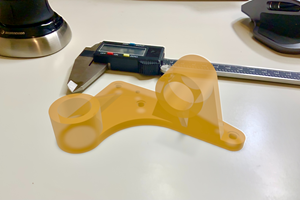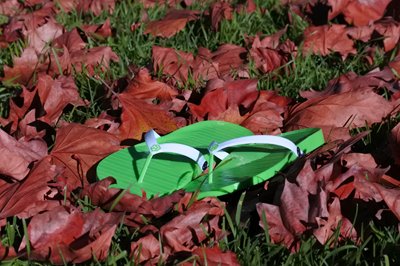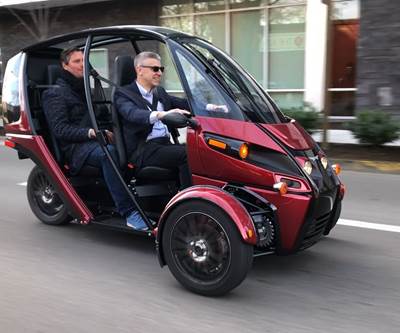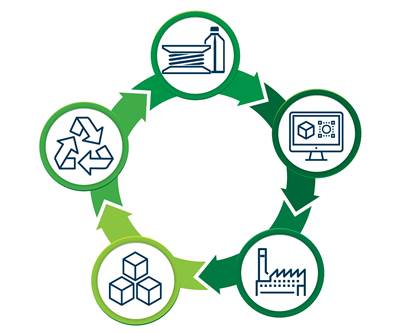Additive Manufacturing and Sustainability Go Together — Here Is Why
3D printing enables sustainable production through recycled materials, end-of-product-life-cycle solutions, and helping to realize eco-friendly products.
One of the striking commonalities among production facilities and processes relying on additive manufacturing (AM) is this: the quiet. Part-making processes in general are noisy. Molding, forming, stamping and machining can be downright loud. But AM — whether metal or polymer, deposition or fusion — frequently makes barely a sound. I’ve spoken of this as an aspect of the human comfort of this mode of production, but there is also something else to see here: the energy savings. A loud noise requires energy to produce. That noise is a side effect. Energy not spent on noise is therefore energy saved. The quiet of 3D printing is moment-by-moment evidence of additive’s energy efficiency, of AM as a means of sustainable production.
Is sustainability a goal for you? Is it a value you believe your manufacturing business should hold high? Take care; some pull back from the term, associating it with militant greenness or with shaming or obstructing people who are merely using resources to make their way in this world. But there are different associations to consider as well. Do you value frugality? Stewardship? Leaving things as you found them? These are values pointing to sustainability.
More, do you expect your business’s community, customers and potential employees to increasingly give attention to this aspect of the company’s performance?
The answer might be yes to all these questions. If sustainable production is a value both you and the stakeholders important to your business all cherish, then the time to realize that value is now, and the way to do so is through additive manufacturing.
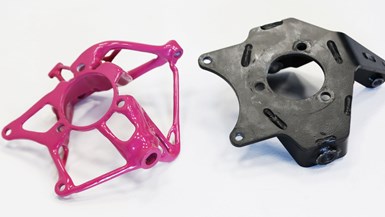
The shift from the part at left to the part at right illustrates two transitions at the same time. One transition is from conventional to additive manufacturing, because this is a welded assembly replaced by a 3D printed component. Another transition is toward more sustainable manufacturing and a more sustainable product. This part is lighter in weight, more material-efficient and requires less energy to produce. The application for this part is an energy-efficient micromobility vehicle; read more here.
Additive and sustainability connect. How they do so is something I need not explain here, because many recent articles we have posted make this link. Additive manufacturing enables eco-friendly products, it provides for end-of-product-life-cycle solutions for eliminating waste and scrap and it allows for resource-efficient material choices via recycling. The benefits can even be realized all at once.
Most of the articles linked above were written by Stephanie Hendrixson, a familiar name on this site. She undertook sustainability as a personal project early in 2020, exploring additive as a means to all the links in the chain of a circular economy. Then the pandemic came. Disruption came. As a result, sustainability and the circular economy became even more relevant than we had imagined when she began. She describes why in a comprehensive piece introducing and exploring the concept of the circular economy. To put it plainly, the shift from a linear to a circular economy and the shift from conventional to additive production are disruptive. But if we are disrupted already, then let’s go there.
Sustainability’s time is now because additive’s time is now. They go together. Many are rethinking manufacturing because of vulnerabilities made apparent this year. For simpler supply chains and more scalable and resilient production, AM is an answer. And, as our coverage continues to illustrate, AM is the manufacturing method that can bring sustainability along with it, if this is a value we seek to make real.
Related Content
3D Printed Heat Exchanger Illustrates Siemens' CATCH and Release Approach
Solutions for energy efficiency, sustainability, part repair and more are developing at Siemens’ Charlotte Advanced Technology Collaboration Hub (CATCH) in North Carolina.
Read MoreEvaluating the Printability and Mechanical Properties of LFAM Regrind
A study conducted by SABIC and Local Motors identified potential for the reuse of scrap reinforced polymer from large-format additive manufacturing. As this method increases in popularity, sustainable practices for recycling excess materials is a burgeoning concern.
Read MoreWhy This Photopolymer Developer Wants Prototyping to Go “Massless”
High-performance materials supplier polySpectra is embracing augmented reality (AR) with a new tool called Massless intended to reduce unnecessary 3D printing.
Read MoreNext-Gen Horse Trailers to Be Built With Robotic 3D Printing
Double D Trailers is currently developing a prototype horse trailer that will be made with large-format additive manufacturing. The technology brings potential benefits for labor, weight and design features to this subset of recreational vehicles.
Read MoreRead Next
Retraction Footwear Is the Sustainable Manufacturing Business of the Future
Retraction Footwear offers a new way of buying flip-flops that are made to suit each customer. But the company also represents a new way of thinking about production, in a circular economy loop that encompasses material, design, manufacturing, product and end-of-life.
Read MoreGenerative Design to Bring Weight and Cost Savings for Micromobility FUV
The “Fun Utility Vehicle” from Arcimoto is already in production, and already lightweight. But after just 30 days of redesign for additive manufacturing, the company discovered major components could be made lighter still, and production could be made simpler.
Read MoreAdditive Manufacturing Will Aid And Accelerate The Circular Economy
A circular economy links material, design, manufacturing, product and end-of-life in a continuous, sustainable loop. This special report illustrates the roles for 3D printing every step of the way.
Read More


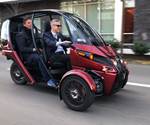




.png;maxWidth=300;quality=90)










